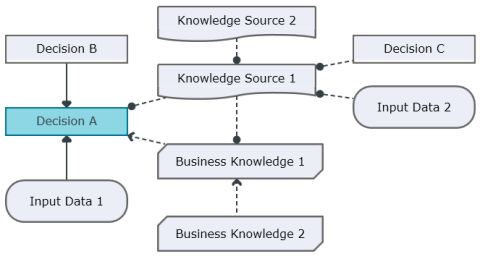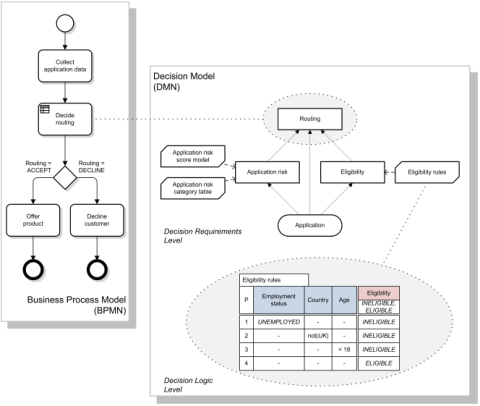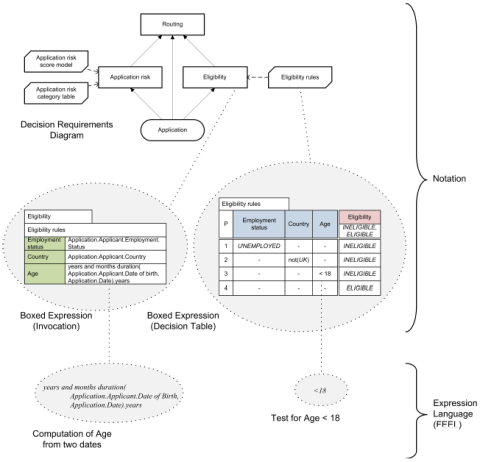Innovator implements principles and elements of the Object Management Group's (OMG) "Decision Model and Notation" (DMN) standard for the configuration of certain models. It is essential that you have a basic knowledge of the OMG's UML 2 and DMN specification to be able to customize these models in a targeted manner to suit your company or project.
Using DMN in Innovator
Innovator contains model templates with special profiles which implement the Object Management Group's (OMG) "Decision Model and Notation" (DMN) standard.
It is essential that you have a basic knowledge of the OMG's UML 2 and DMN specification to be able to customize these models in a targeted manner to suit your company or project.
All essential DMN specification aspects are addressed in this document; this is done to highlight the transfer of these constructs in the Innovator profiles.
You will learn
-
How the OMG's DMN specification is structured
-
Which base constructs are used in the DMN metamodel
Structure
The OMG's DMN specification comprises of the document:
-
"Decision Model and Notation (DMN)" defines the MOF-2-compliant metamodel as well as the syntax and semantics of the model elements.
The main chapters are:
- 5. Introduction to DMN
- 6. [Decision] Requirements (DRG and DRD)
- 7. Relating Decision Logic to Decision Requirements
- 8. Decision Table
It is essential to understand the "Superstructure" UML document to be able to configure profiles.
The most important concepts of the "Decision Model and Notation (DMN)" specification should be discussed briefly here. Extracts from the official "OMG Decision Model and Notation (DMN), V1.1" (OMG Document Number: formal/2016-06-01) specification will be used during the following explanations.
The figure below illustrates the aspects of the DMN standard, how they build upon each other, and the interaction with the OMG "Business Process Model and Notation" (BPMN) standard.
A distinction is thus made between the decision requirements level, which is modeled with decision requirements diagrams and the decision logic level which is primarily modeled with the business knowledge model decision table, e.g. "Eligibility rules" in the figure.
You can use decision requirement diagrams to model a domain of decision-making which the most important elements and the dependencies between them are depicted in. As elements of decision-making, you model decisions, business knowledge, knowledge source and relevant input data.
Figure: Elements of a Decision Requirement Diagram and their Possible Requirement Relationships

The decision table is for defining business knowledge that returns the rules for the determination of a decision result on the basis of decision parameters. The parameter table is for managing the information items of a decision for a certain invoked business knowledge model (Boxed Invocation).
The following figure shows the named constructs of the DMN standard.
Further Information


